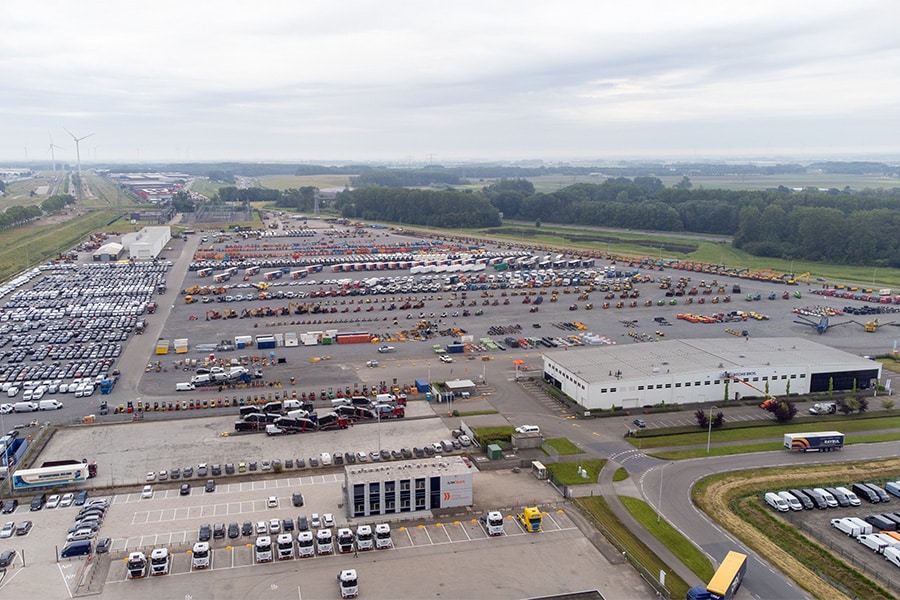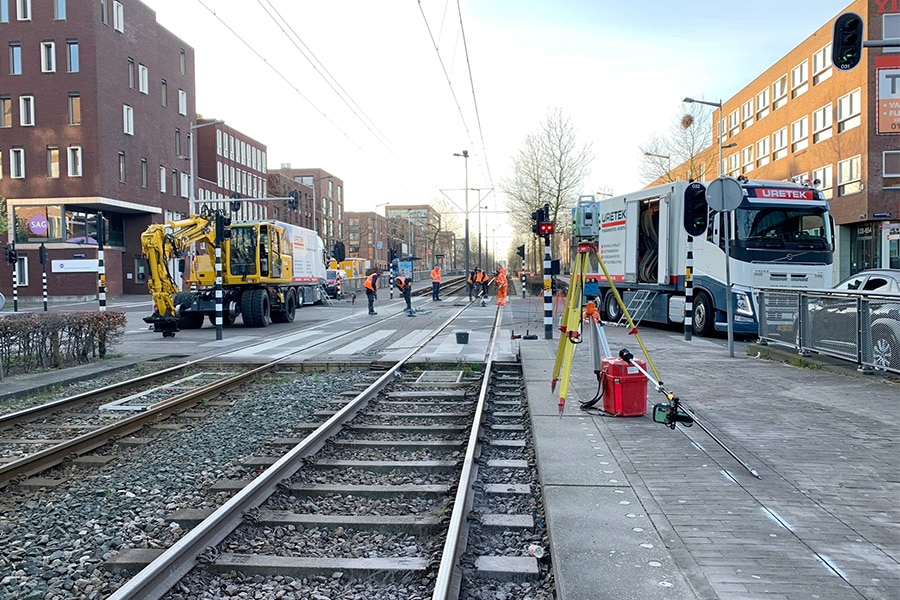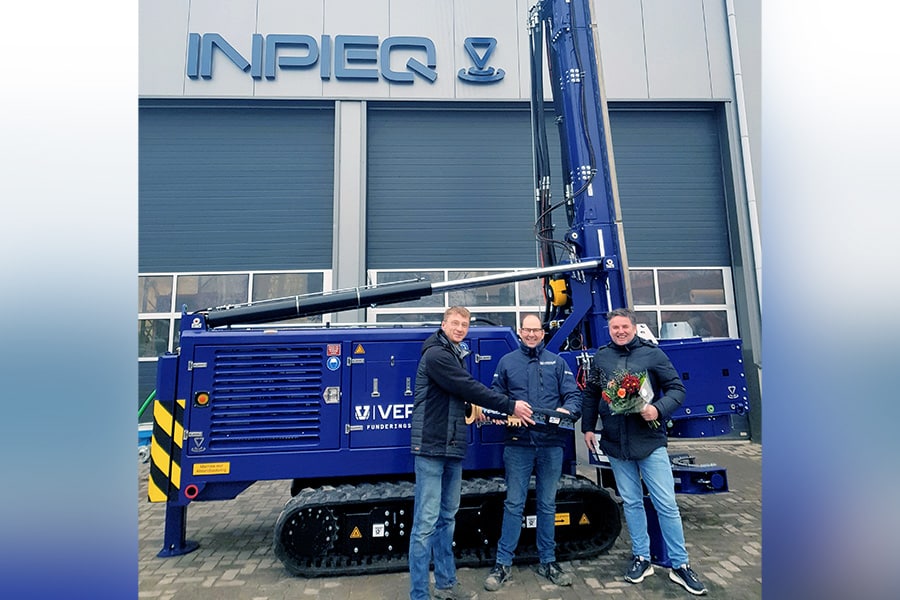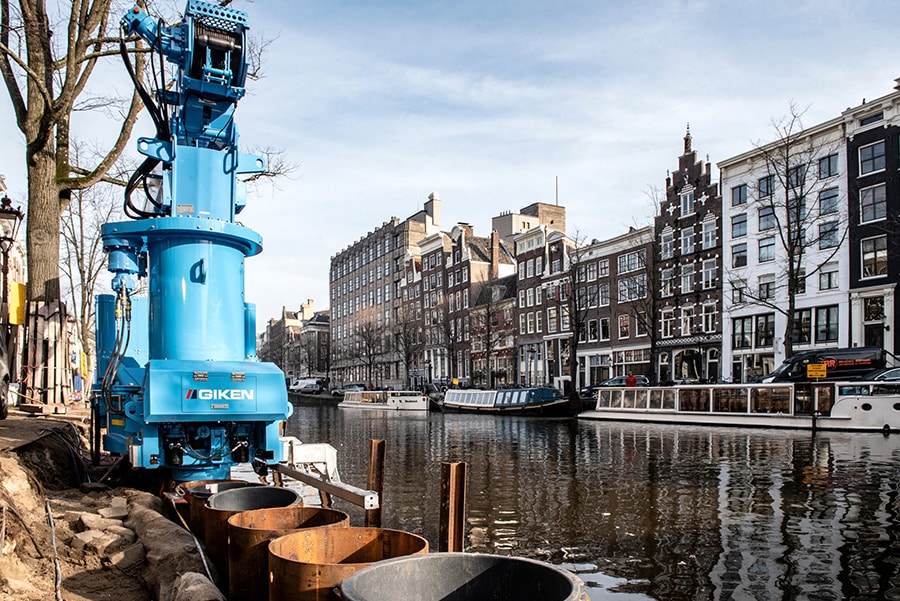
Infiltration buffer applied in climate-adaptive area development in downtown Horst aan de Maas
The area around the cultural center 't Gasthoês in Horst aan de Maas, which is being renovated, is being redeveloped into a green area. This petrified area is struggling with current problems of heavy rainfall, extreme drought and heat stress. The Rockflow infiltration buffer from Lapinus (part of the ROCKWOOL Group) is being applied in this area.
The 100% Recyclable Infiltration Buffer reduces water flooding on paved surfaces around 't Gasthoês after a heavy rain. The smart water management system buffers rain-water and infiltrates it into the soil, maintaining groundwater levels. The climate atlas indicates that the temperature at certain locations in Horst aan de Maas is higher than elsewhere. When there are heavy rain showers, the sewers cannot sufficiently drain the rainwater. Therefore, the municipality of Horst aan de Maas has determined to take climate-adaptive measures within the redevelopment of the area around 't Gasthoês, in order to create a greened area that combats flooding, heats up less quickly, combats desiccation and maintains the groundwater level.

Green area
't Gasthoês has been owned by Wonen Limburg Housing Corporation and is now owned by the municipality of Horst aan de Maas. Marleen van Ulft is senior area developer at Wonen Limburg. Her duties include keeping neighborhoods and districts livable and offering people a pleasant place to live. "Greenery in a residential area is an important part of this," she points out. "Municipality of Horst aan de Maas pays increasing attention to climate adaptation. The sustainable area transformation, called Hof te Berkel, around 't Gasthoês is a great example of this." Wonen Limburg, in cooperation with the Municipality of Horst aan de Maas, initiated this project to make their existing properties and the infra around them sustainable and green. "To combat flooding during peak downpours, the municipality sets requirements in terms of the living environment, spatial planning, sustainability, maintenance and, of course, the costs involved," says Van Ulft. The municipality's main objective is to transform the area around 't Gasthoês into an open and green area, directly connected to the city center. The existing parking lot has been completely redesigned for this purpose. Van Ulft explains that Wonen Limburg is involved with a large number of parties in the development of the design plans for the public infra, such as residents, entrepreneurs and construction parties. "Through this way of working together, conscious choices can be made to make the climate-proof, urban environment more sustainable," Van Ulft says. The project will be completed this fall.
Construction Team
Wim Ramakers is project manager at the infrastructure company BLM Wegenbouw in Wessem. "We are carrying out this project in a construction team setting," says Ramakers. The construction team consists of the municipality as client, main contractor BLM Wegenbouw and agency Kragten, which supported the municipality in the preliminary design of the redevelopment of the Gasthoês area, in which Lapinus' smart water management system was applied as a total solution. Lapinus regularly participated in this construction team to help think of a total solution "The area will have a diverse and sustainable quality for improving the environment and living environment in this petrified area." The parking lot that remains intact must remain accessible. Rainwater will be collected and infiltrated into the soil as much as possible. "All street gullies in the paved surface are connected to a separate stormwater sewer, which flows into Lapinus' Rockflow infiltration buffer. During peak downpours, the buffers absorb rainwater and then release it to the soil in a delayed manner. "This prevents flooding and dehydration of the soil," he said. In addition, the roof water from 't Gasthoês is collected and channeled into a permavoid system, with the rockwool providing water transport to the plants. This system includes underground water buffers under the green spaces, which provide capillary action, maintaining water levels for the plants. "We are testing in this project whether this proven permafoil system can be replicated by the Rockflow system," Ramakers said.
Climate Improvement
Joop Schaghen is an area development and citizen participation consultant with Kragten in Herten. "Flooding during heavy rainfall and strong urban heating in summer are topical issues," Schaghen says. "Municipalities increasingly recognize the problems that paved surfaces cause in urban areas." The fact that the Netherlands is currently facing another drought period contributes greatly to this. "Fewer bricks and more greenery in the city reduce flooding and provide more cooling in the summer." Schaghen explains that for greening the Gasthoês area, the Rockflow water management system combined with the water-absorbing ZOAK clinker and the proven permavoid system is an ideal application to capture water and retain it in the soil. "The infiltration buffer is a practical and sustainable solution to the current water management problems that municipalities are increasingly facing.
It has a high permeability and high absorption rate, and it can absorb 95% of its own volume in water," Schaghen explains. "This permavoid system creates an optimal growing condition for plants and trees, which ultimately contributes greatly to climate improvement in the area," Schaghen said.

Ralf Vaessen is director of landscaping company Herman Vaessen in Maasbree. He is involved in the Gasthoês project as a specialist in innovative greening of paved surfaces in urban areas. "The intention is that this area should be able to buffer and infiltrate some 400 cubic meters of water into the soil." Vaessen explains that working together in construction teams with the implementing parties involved is the driving force behind this project. "During the preliminary process, these parties were able to share and use their expert knowledge and experience extensively." Vaessen installed the landscaping that uses sensors and moisture monitoring to track and regulate water content. In the area around 't Gasthoês, several parking lots were repaved with TileSystems' zoak clinkers (very-open-waste ceramic). Made from product waste from ceramic tiles, these zoak clinkers can quickly absorb rainwater. "What is interesting about these tiles is that not only do they quickly absorb, buffer and infiltrate water and allow water to drain into the Rockflow underground infiltration buffer, but they also allow water to evaporate after a heavy summer rain. During hot summer days, this has a cooling effect," says Vaessen.
Trial Bins
Linda de Vries, business developer at Lapinus, deals with the application of stone wool in water management systems with a focus on urban green and climate adaptation in urban areas, using circular materials. De Vries says that the Gasthoês project is proceeding fairly uniquely, as an innovative construction team has been working on it. "Particularly interesting to be part of this and to witness that together we can fulfill all those wishes of the client," she notes. "Knowledge is being shared to design together a green space for this area, in which water is retained and reused." This type of collaboration is quite unique in this type of infrastructure project. De Vries thinks that in future projects of this type, executing parties will work together more often to find the right solutions to problems of desiccation and water management in public spaces. She explains that in this project Gasthoês planting beds with a substrate mixed with loose rockwool and capillary rockwool elements were constructed to test how water can be retained just below the surface. As opposed to infiltrating excess water as quickly as possible, water from small showers is retained here to combat drought. This substrate has strong water suction, and this capillary action causes water to be drawn to the surface from a buffer, keeping the soil moist so plants do not dry out. "Water is retained to cover droughts. This project gives us a super nice opportunity, especially now in this drought period to be able to conduct these tests," says De Vries.



